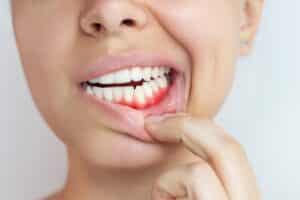
Gum disease can cause more than just bleeding gums and bad breath. When untreated, it can destroy the bone beneath your teeth. This type of damage makes dental bone grafting necessary before replacing missing teeth with implants.
At Hamilton Family Dentistry in Baltimore, MD, Dr. Erin Wolfson and Dr. Sydney Nolan utilize advanced dental treatments to help patients recover from bone loss resulting from gum disease. Dr. Wolfson earned her DDS from the University of Maryland and completed a residency in Advanced Education in General Dentistry. She is certified in dental implants and Invisalign, and has completed advanced courses at the Kois Center and Western Surgical & Sedation. Dr. Nolan earned her doctorate at the LECOM School of Dental Medicine and has specialized training in endodontic and oral surgery procedures.
How Gum Disease Causes Bone Loss
Gum disease, also known as periodontal disease, begins with inflammation in the gums. As the disease worsens, it moves deeper, damaging the bone that holds your teeth. Over time, this can lead to tooth loss and structural changes in your jaw.
You may need dental bone grafting if:
- Your teeth feel loose: This often means bone is no longer holding them in place.
- Gaps have formed between teeth: Shifting teeth can indicate a loss of structural support.
- You’ve lost one or more teeth: Missing teeth can speed up bone loss.
- You’re planning to get dental implants: Implants require a strong foundation.
By stopping gum disease early, you may avoid these complications. But if bone loss has already occurred, grafting is often the next step.
Bone Grafting After Gum Disease
Dental bone grafting replaces bone lost due to infection or trauma. It also creates the support necessary for future treatments, such as implants. The graft can be sourced from various sources and is custom-selected based on your specific needs.
Here’s what happens during bone grafting after gum disease:
- Assessment and planning: Your Hamilton Family dentist will use digital imaging to measure the extent of bone loss.
- Graft placement: The graft is positioned in the damaged area to rebuild bone structure.
- Healing period: The graft integrates with your bone over several months.
- Follow-up care: Maintaining good oral hygiene helps prevent further damage to the bones.
With proper care, the procedure can support a strong, healthy smile for years to come.
Start Rebuilding Your Smile Today
Think gum disease has affected your jawbone? Call 410-426-8200 to schedule an appointment at Hamilton Family Dentistry in Baltimore, MD. Learn if dental bone grafting is right for you to restore your health and comfort.